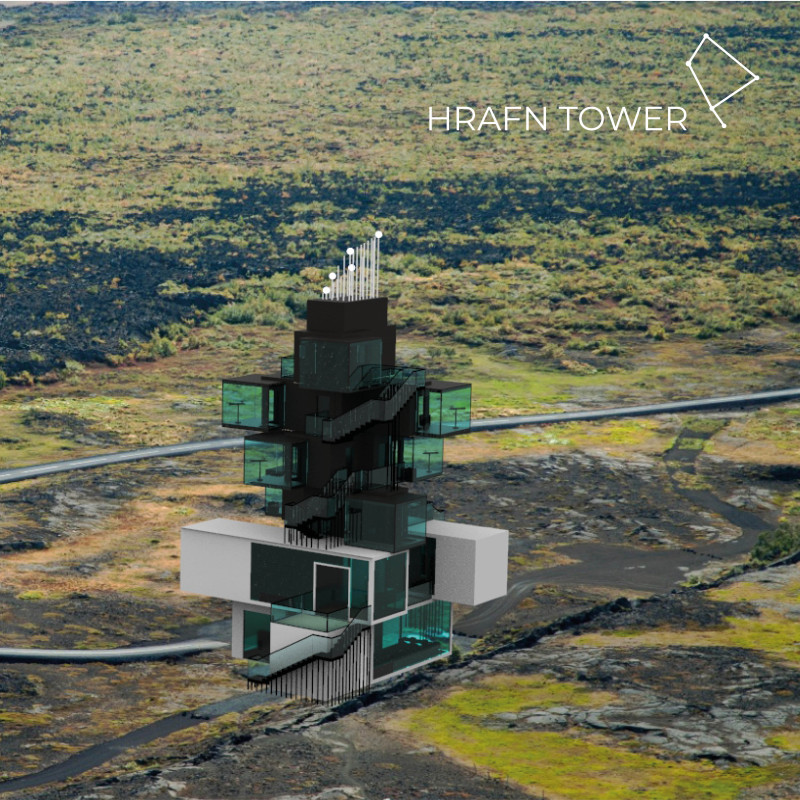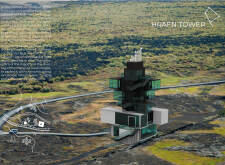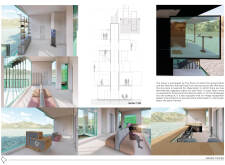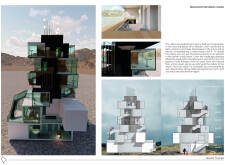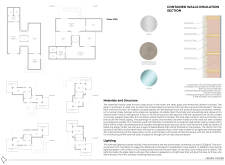5 key facts about this project
The Hrafn Tower is located near the Grjotàgjà cave and the Euro-Asian continental fault. This structure connects with the surrounding natural landscape while serving an important function as an observation platform. The design concept revolves around transparency and accessibility, making it a space for visitors to engage with the expansive views that the location offers.
Design Concept
The tower is characterized by its light and airy appearance. It consists of a series of glass cubes framed by steel, allowing an open visual connection to the environment. The overall design includes five levels, with the ground and first floors dedicated to services. The upper three levels are specifically for observation, giving visitors the chance to experience the area from different perspectives.
Spatial Arrangement
Each of the observation floors features outward-projecting cabins. These cabins create a sensation of floating over the landscape, enhancing the ability for visitors to immerse themselves in their surroundings. An external staircase and a central elevator allow for easy movement throughout the structure, encouraging exploration on every level.
Materiality
The choice of materials plays a significant role in both the appearance and function of the tower. Steel makes up the main structural framework, providing stability and strength. Reinforced cement concrete is used for the core structure, while glass dominates the facade. This use of glass not only lets in natural light but also provides uninterrupted views, bridging the indoor and outdoor experiences.
Lighting Integration
Lighting is carefully integrated into the design to enhance the visitor experience. At the top of the tower, a circular LED feature connects the building to the night sky. LED strips around the observation cabins illuminate them, emphasizing the lightness of the glass cubes as evening falls.
The thoughtful arrangement of spaces, combined with strategic material selections, ensures that the Hrafn Tower serves as both a landmark and a place for contemplation. Visitors can enjoy the scenery while reflecting on their connection to the landscape around them.


